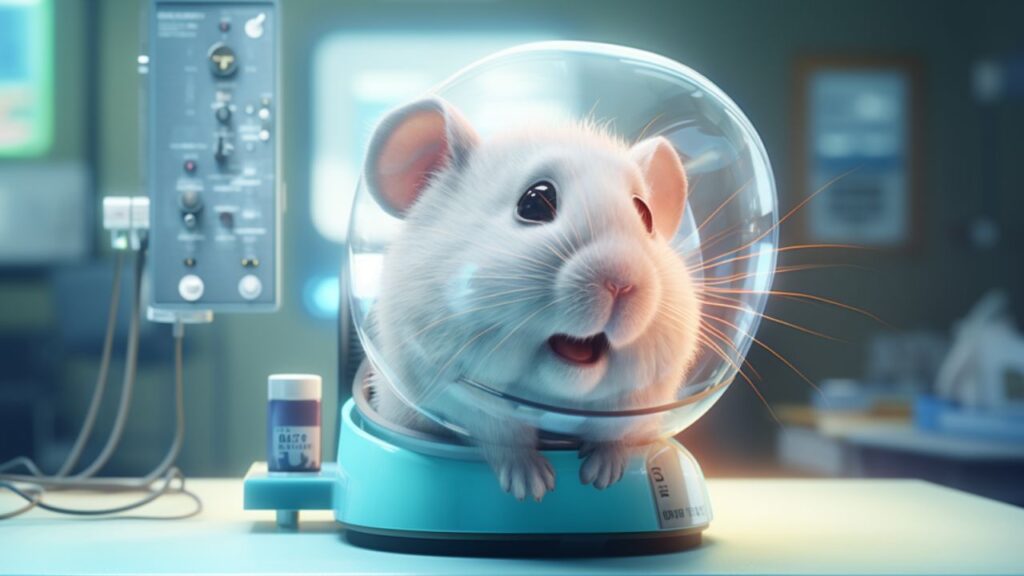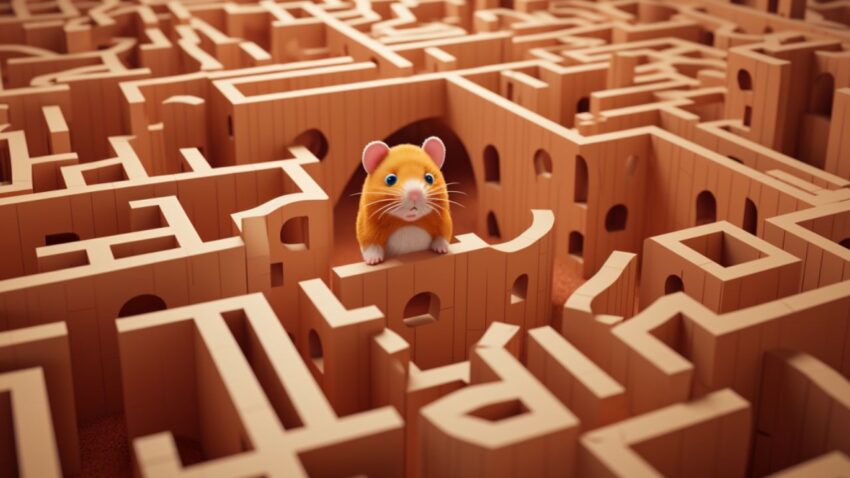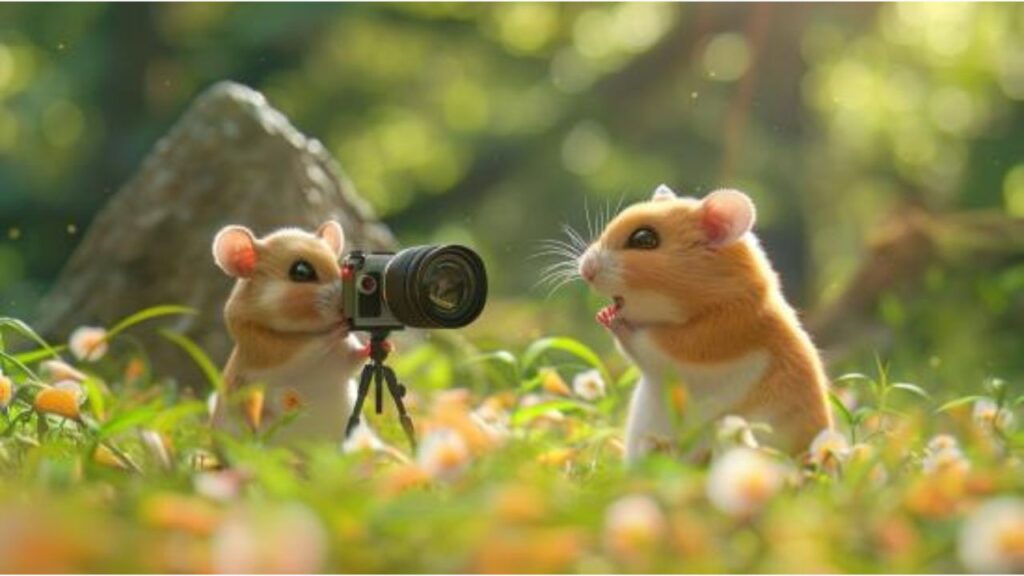In the heart of every furry, little hamster lies a brain that pulsates with intelligence and intrigue. Many, enchanted by their cute demeanor and tiny stature, often overlook the cognitive capabilities that these creatures possess. Let’s embark on a journey that delves deep into the intellectual world of hamsters and unearths the surprising truths that lie beneath.
Introducing Hamster Cognition
For the uninitiated, cognition refers to the mental processes involved in acquiring knowledge and comprehension. This includes thinking, knowing, remembering, judging, and problem-solving. Hamsters, contrary to some beliefs, have demonstrated a plethora of these cognitive abilities. Their brains, although minute in comparison to ours, are bustling hubs of thought processes, decision-making, and more.
Why Studying Hamster Intelligence Matters
One might ask, “Why should we be interested in hamster intelligence?” Beyond the obvious intrigue, understanding their cognitive functions has profound implications. For one, it challenges our preconceptions about intelligence in the animal kingdom. Furthermore, by studying their neural mechanisms and behaviors, scientists can gain insights into neurobiology, learning processes, and even certain human cognitive disorders. Plus, for pet owners, understanding their hamster’s intellectual needs can lead to enriched environments, ensuring mentally stimulated and happier pets.
Setting the Stage for Deep Dive
As Dr. Whiskerson, I’ve always been passionate about advocating for the lesser-acknowledged intellectual capacities of our furry friends. This article will venture beyond the hamster wheel and the fluff, diving deep into the research, anecdotes, and experiments that have aimed to quantify and understand hamster intelligence. Strap in, dear reader, for a revelation-filled journey through the maze of hamster cognition.
Hamster Brain Anatomy

From a cursory glance, it might be easy to dismiss the intricate complexities of the hamster brain. Yet, as we delve deeper into its anatomy and function, a world of wonder unravels, showcasing a remarkable organ capable of feats that often surprise even seasoned experts.
Structure and Function of the Hamster Brain
The hamster brain, like that of other mammals, is divided into various regions, each with its specialized function. The cerebrum, responsible for decision-making, problem-solving, and behaviors, is remarkably intricate for such a small creature. Next, the cerebellum aids in motor control and coordination, vital for those quick, nimble movements we often see. The hypothalamus, a pivotal player in the hamster’s endocrine and nervous systems, controls body temperature, hunger, and circadian rhythms.
Comparing Hamster Brain to Other Rodents
When placed side by side with other rodents, the hamster brain shares many similarities but also some key differences. For instance, rats and mice, often used in scientific research, have brains that have been studied more extensively. However, hamsters possess a unique hippocampal structure, an area tied to memory and navigation. This distinction makes them intriguing subjects for spatial recognition studies.
Why Size Isn’t Everything
It’s a common misconception that brain size directly correlates with intelligence. In reality, it’s more about the neural connections and the density of neurons. Hamsters, despite their petite brains, exhibit dense neural networks that allow for sophisticated cognitive processes. Their brains are structured to maximize efficiency in a compact space. This means that even within their small craniums, there’s a lot of intellectual “oomph” happening. It’s a testament to the age-old adage: never judge a book (or a hamster) by its cover (or size)!
Problem-Solving Prowess

Hamsters, beneath their cute and fluffy exteriors, possess an unexpected depth of cognitive ability. Their adeptness in various challenges, from maze navigation to memory tests, reveals a capacity for problem-solving that many might not expect from such tiny creatures.
Navigating Mazes: More than Just a Game
For many, the image of a hamster navigating a maze might conjure up notions of simple entertainment. However, these maze exercises are profound insights into the hamster’s spatial intelligence and memory. As they work their way through the labyrinth, hamsters rely on a combination of visual markers and scent trails to find the most efficient path to their goal, usually a tasty treat. Over time and with repetition, they can even optimize their routes, showcasing a learning curve that’s truly remarkable.
Memory Challenges and Recognition Abilities
Beyond mazes, hamsters have demonstrated an impressive ability to recognize and remember objects, locations, and even fellow hamsters. For instance, in experiments where hamsters are presented with a familiar object and a new one, they tend to spend more time inspecting the new item, indicating recognition of the familiar. Furthermore, they’ve shown the capability to remember the location of hidden treats even after several days, a testament to their long-term memory skills.
Adapting to New Environments
Hamsters, like many rodents, are highly adaptable creatures. When introduced to a new environment, they quickly survey their surroundings, identifying safe spots, potential threats, and resources. This adaptability is not just a testament to their survival instincts but also a showcase of their ability to process new information, learn from it, and adjust their behaviors accordingly. Whether it’s a new cage layout or the introduction of unfamiliar toys, hamsters continually demonstrate their cognitive flexibility in the face of change.
Social Cognition

Delving into the social lives of hamsters offers another fascinating glimpse into their cognitive world. Beyond their individual intelligence, hamsters possess a rich tapestry of social behaviors, from establishing hierarchies to recognizing allies and adversaries, all of which shed light on their understanding and interpretation of their fellow hamsters.
Hamster Social Hierarchies and Dynamics
In nature and even in captivity, hamsters exhibit clear patterns of social hierarchies. These structures, while they may seem rudimentary, are deeply embedded in their social fabric, guiding their interactions and determining factors like access to resources. Dominant hamsters, for instance, might secure the best nesting spots or have first dibs on food. This establishment of rank isn’t arbitrary; it’s a product of intricate social cues, posturing, and sometimes physical altercations. Observing these dynamics provides a window into the hamster’s social intelligence and their capacity to understand and navigate complex social situations.
Recognizing Friends and Foes
Hamsters have a keen ability to recognize and remember other hamsters they’ve encountered. This recognition isn’t limited to just distinguishing between familiar and unfamiliar hamsters; they can also differentiate between friends and foes based on past interactions. For instance, a hamster that’s had a positive or neutral interaction with another will approach them more openly in subsequent meetings. In contrast, a past conflict can lead to avoidance or even aggressive posturing. This ability to remember past social interactions and adjust future behaviors accordingly is a testament to their social memory and discernment.
Communication and Its Nuances in the Hamster World
Communication is pivotal in any social species, and hamsters are no exception. They employ a rich repertoire of vocalizations, body postures, and even scent markings to convey messages to their peers. These can range from chirps and squeaks that express curiosity or contentment, to more aggressive hisses and teeth chatters that signal displeasure or a warning. Furthermore, hamsters utilize scent glands to mark territory or communicate their social status. Picking up on these subtle cues and responding appropriately indicates a depth of social understanding that goes beyond mere instinct, showcasing yet another layer of their cognitive prowess.
Learning and Memory

When one delves into the cognitive world of hamsters, it’s impossible not to be awed by their capacity for learning and the tenacity of their memory. These tiny creatures might sometimes be mistaken for simple beings, but their brains are constantly at work, processing new information, recalling past experiences, and applying learned behaviors in various situations.
How Hamsters Learn: Patterns and Stimuli
The learning process in hamsters is intrinsically linked to stimuli from their environment. Whether it’s the rustling of a treat bag, the feel of a particular bedding, or the light patterns indicating daytime, hamsters pick up on these cues and adapt their behavior accordingly. Their brains are wired to recognize patterns; for instance, if a certain sound consistently precedes feeding time, the hamster will quickly associate that sound with food and react with anticipation. This pattern recognition is essential for their survival, allowing them to predict potential threats, locate food sources, or find their way back home after a night of foraging.
The Remarkable Retentive Memory of Hamsters
Hamsters possess a commendable retentive memory, especially when it comes to spatial information. One often-cited example is their ability to navigate complex mazes using memory cues from previous experiences. But it’s not just about mazes. In the wild, a hamster’s life depends on its ability to remember locations of food caches, safe pathways, and potential danger zones. This spatial memory is also evident in captivity, where hamsters can recall the layout of their cage, the location of their water bottle, and even the hands that feed and care for them.
Teaching Tricks: Can Hamsters Be Trained?
Given their capacity for learning and memory, the natural question arises: Can hamsters be trained? The answer is a resounding yes! With patience and positive reinforcement, hamsters can be taught various tricks, from simple ones like coming when called to more complex tasks like navigating obstacle courses. The key is consistency and reward. Using treats as positive reinforcement, one can guide a hamster to associate specific actions with rewards. Over time, with repeated practice, these behaviors can be reinforced and recalled even without the immediate promise of a treat. This training not only showcases their cognitive abilities but also provides mental stimulation and enrichment, essential for their well-being.
Emotional Intelligence

The realm of emotional intelligence isn’t exclusive to humans. As surprising as it may sound to some, hamsters, too, have their own spectrum of emotions and an inherent ability to respond to emotional cues. Understanding the emotional landscape of these tiny furballs can drastically transform the way we care for and interact with them, leading to healthier, happier hamster lives.
Understanding Hamster Emotions
Hamsters experience a range of emotions, from fear and anxiety to contentment and curiosity. Observing a hamster’s body language, vocalizations, and behavior can provide insights into their emotional state. For instance, a relaxed hamster might stretch out and lazily groom itself, while an anxious one might frequently freeze or attempt to hide. Similarly, a curious hamster might sniff around, stand on its hind legs, and explore its surroundings, while an irritated or scared one might emit sharp, high-pitched squeaks. Recognizing these emotional cues is vital for ensuring the well-being of our furry friends, as it allows caregivers to adjust the environment or their approach accordingly.
Empathy and Its Role in Hamster Society
Empathy, the ability to understand and share the feelings of another, is a trait commonly associated with more complex mammals. However, hamsters, especially those living in the wild, showcase elements of this behavior. For instance, when one hamster senses danger, it might emit an alarm call, alerting others in its vicinity. This isn’t just a random noise; it’s a communicative effort to protect its kin or group members from potential threats. Similarly, when living in close proximity, hamsters often groom one another, a behavior that fosters social bonds and promotes group cohesion.
The Link Between Emotional and Cognitive Intelligence
Emotional intelligence in hamsters is closely linked to their cognitive abilities. Their capacity to read and respond to emotional cues is deeply rooted in their survival instincts. For instance, understanding the emotional state of a fellow hamster can help in avoiding conflicts, crucial for survival in the wild. On the flip side, a hamster’s cognitive abilities, like memory and learning, play a role in shaping its emotional responses. A hamster that has had a negative experience with a particular stimulus will remember it and might react with fear or caution in its presence. Understanding this interplay between emotional and cognitive intelligence is fundamental for providing hamsters with an environment that caters to both their mental and emotional needs.
Challenges in Assessing Hamster Intelligence

Assessing the cognitive capabilities of animals, particularly small ones like hamsters, is not without its challenges. From the constraints of traditional testing methodologies to the ethical dilemmas surrounding animal research, studying hamster intelligence presents a multifaceted puzzle. However, understanding these hurdles is pivotal in advancing our knowledge and in ensuring that research is both accurate and humane.
Limitations of Traditional Testing Methods
Traditional methods of assessing animal intelligence often revolve around mazes, puzzles, and reward-based tasks. While these have provided valuable insights, they come with their own set of limitations when applied to hamsters. For one, these methods may not fully capture the range and depth of hamster cognition. Hamsters have evolved with specific skills tailored to their natural habitats and survival needs, and laboratory settings might not always be the best stage for showcasing these innate abilities. Additionally, the results can sometimes be influenced by external factors, such as the hamster’s health, mood, or even the time of day.
Ethical Considerations in Research
As our societal understanding of animal rights and welfare has evolved, so too has our perspective on animal research. Ethical considerations are now at the forefront of any animal study, and rightly so. For hamsters, this means ensuring that research methods do not induce unnecessary stress, harm, or discomfort. Using positive reinforcement, minimizing invasive procedures, and creating a naturalistic environment are just some of the ways researchers aim to make studies more ethical. Moreover, there’s an increasing emphasis on interpreting results in a way that promotes the well-being and improved care of hamsters, both in captivity and the wild.
The Way Forward in Hamster Cognition Studies
With the challenges in mind, the future of hamster cognition research lies in innovative, ethical, and holistic approaches. Advancements in technology may offer non-invasive ways to study brain activity, shedding light on cognitive processes without physical intrusion. Furthermore, observational studies in more natural settings can provide insights that lab environments might miss. Collaborations between ethologists, neuroscientists, and hamster caregivers could bridge the gap between laboratory research and real-world applications, leading to a more comprehensive understanding of these fascinating creatures. The ultimate goal? A world where our knowledge enhances the lives of hamsters, recognizing and respecting their cognitive abilities.
Conclusion

Our journey through the winding maze of hamster cognition brings us to a delightful realization: these tiny creatures are packed with an impressive range of cognitive capabilities that often go unnoticed. From their problem-solving feats to their emotional depths, hamsters never cease to amaze. As we wrap up our exploration, it’s essential to both acknowledge the insights gained and recognize the potential for what lies ahead in hamster intelligence studies.
Recapping the Hamster’s Cognitive Journey
Beginning with the intricate workings of the hamster brain, we delved into how these rodents navigate their environment, form social bonds, and retain memories. We learned that hamsters, though small in size, have a cognitive framework that allows them to interact with the world in sophisticated ways. Their ability to recognize patterns, remember routes, and even showcase hints of emotional intelligence, paints a picture of a creature that’s far from just being a simple pet.
The Potential for Further Research
While we’ve unearthed many facets of hamster cognition, the field remains ripe for exploration. The challenges in assessing hamster intelligence, as discussed, mean that many aspects are still shrouded in mystery. But these challenges also pave the way for innovation. As technology advances and our methodologies refine, we can anticipate even more in-depth insights into the hamster mind. There’s a promise of uncovering nuances in their learning processes, social interactions, and perhaps even discovering entirely new cognitive traits.
A Call for Appreciating Hamster Brilliance
In light of all we’ve learned, it’s crucial to view hamsters not just as pets but as intelligent beings with their own sets of emotions, skills, and needs. Understanding and appreciating their cognitive abilities can transform the way we care for them, ensuring a more enriched and fulfilling life for our furry friends. After all, as we’ve seen, there’s a lot going on in those tiny heads. And each revelation is a testament to the brilliance that is, the hamster.




